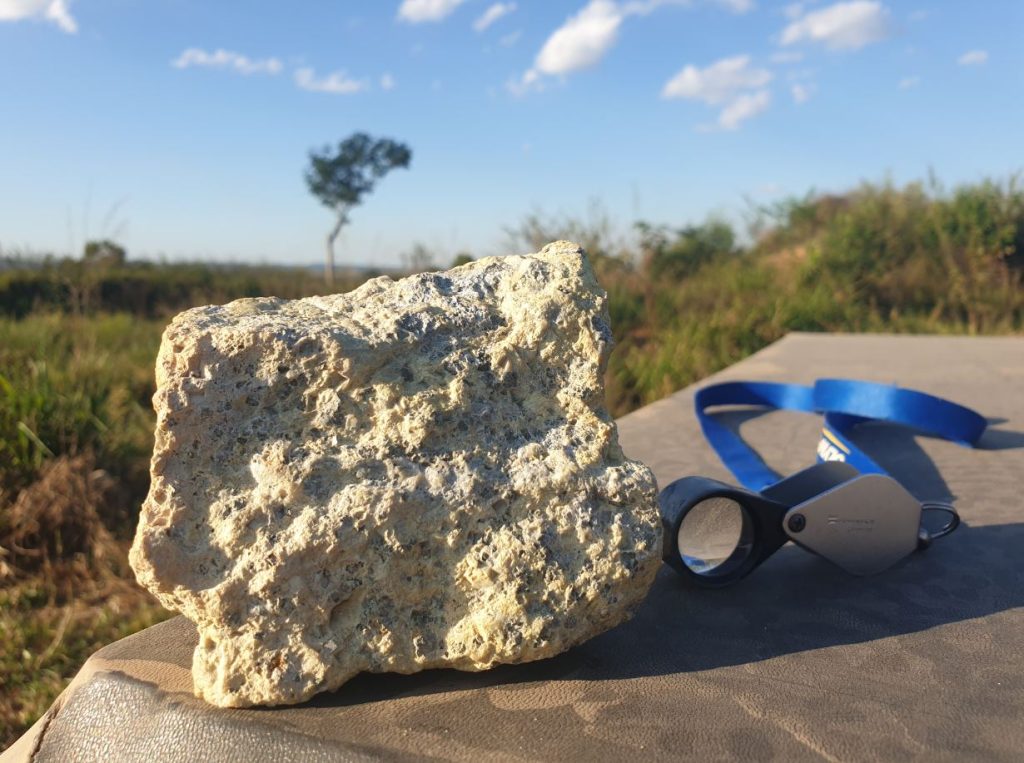Resouro Gold drills 5.1 g/t gold over 11.65 metres at Novo Mundo, Brazil

Resouro Gold Inc. [RAU-TSXV] reported initial drill results from its first phase of exploration at its 100%-owned Novo Mundo gold project, located in the Alta Floresta gold belt in Mato Grosso, Brazil.
Assays from the first two of 11 diamond drill holes completed by Resouro have been received, with hole NMDD002 returning 11.65 metres of 5.1 g/t gold from 65.89 metres, including 2.5 metres of 8.1 g/t gold from 66.39 metres and 4.6 metres of 6.3 g/t gold from 72.94 metres.
These results confirm the broad widths of high-grade mineralization extending to depth below the Dionisio artisanal workings. Assay results for the remaining holes are pending and will be published when received.
This initial program was designed to test the strike and plunge continuity of mineralized shoots along the Luisao – Dionisio- Modesto mineralized trend and confirm the presence of high-grade mineralization identified in historic exploration. This trend makes up a small portion of the 16,735-hectare Novo Mundo property that is characterized by numerous artisanal workings and has undergone no systematic exploration.
Re-logging of historic drill holes, mapping and sampling of artisanal pits and outcrops confirmed the presence of two parallel high-grade shoots some 100m apart, controlled by at least two major E-W striking structures, with a combined strike length of over 4.5 km.
Additional exploration targets over the remainder of the Novo Mundo property have been highlighted by interpretation of historical data including soil geochemistry, re-logging of the historical drill core, geological mapping, trenching, channel and grab chip samples.
Christopher Eager, CEO and President of Resouro, commented: “We are very pleased with these initial results at Novo Mundo, where our exploration is confirming the significant grades and mineralized widths seen in historical exploration and is improving our understanding of the mineralization controls. Importantly, what is becoming very evident as we explore is the significant exploration potential over the remainder of the property outside of the Luisao-Dionisio- Modesto trend. We look forward to updating our shareholders with additional results over the next few weeks.”
Hole NMDD 001 was collared to the east of the main Dionisio artisanal pit and was designed to test the continuation of the mineralized shoot between the Dionisio and Luisao pits. The drill hole intercepted a significant width of alteration and silver mineralization with low sulphide content (>5%) that assayed 6 metres of 74.9 g/t silver from 15 metres, including 2 metres of 215.4 g/t silver from 17 metres. This silver-rich alteration represents a metal zonation along the main trend and follow-up drilling is planned.
Hole NMDD 002 was collared 300 metres west of NMDD 001 immediately south of the Dioniso pit and was designed to test the down-dip extension of mineralization. A reddish monzogranite was intersected to 65.47 metres before cutting a zone of significant mineralization characterized by strong sericitic + chlorite + quartz plus or minus muscovite plus or minus phengite alteration with 15 – 20% coarse disseminated pyrite, with minor chalcopyrite and quartz veins. The main mineralized interval returned 11.65 metres of 5.11 g/t gold (from 65.89 metres), including 2.5 metres of 8.09 g/t gold (from 66.39 metres) and 4.6 metres of 6.3 g/t gold (from 72.94 metres), confirming the depth continuity of mineralization outcropping at the base of the pit. The high-grade gold assays are directly related to sulfide concentration (pyrite with minor chalcopyrite (see link) that forms structurally controlled, steeply-dipping shoots that repeat along the strike of the trends.
